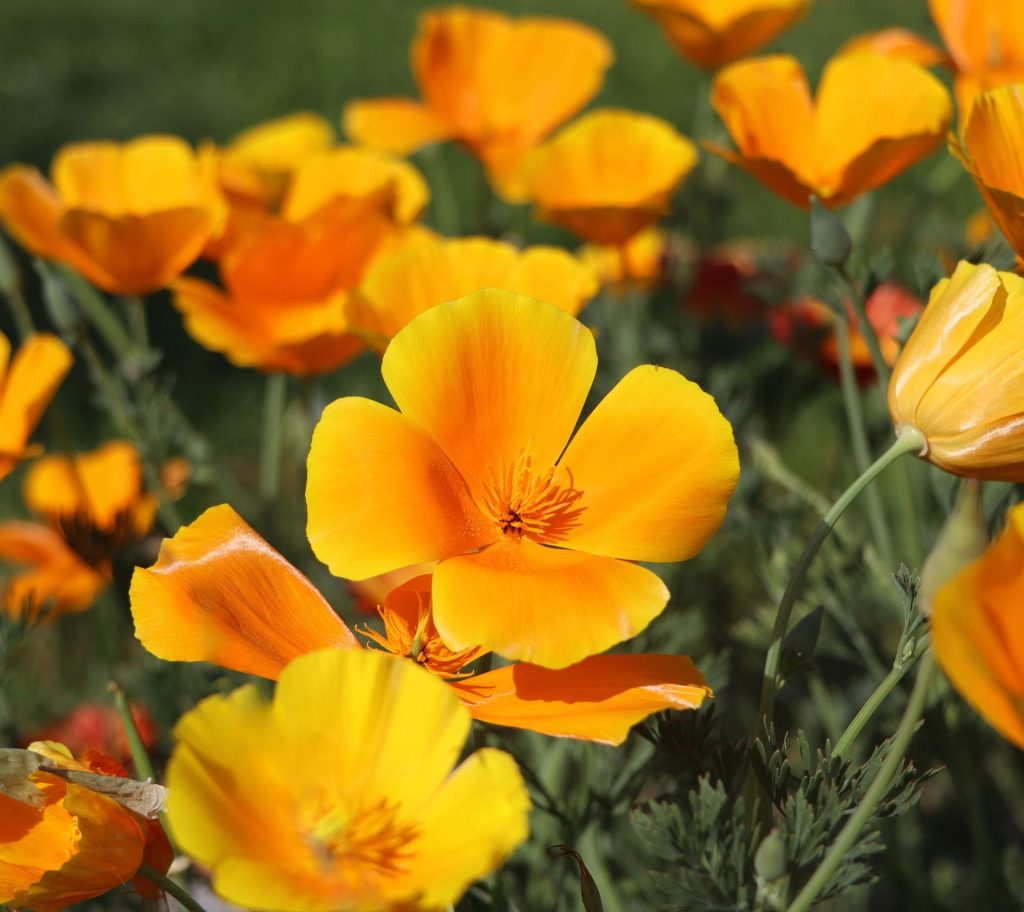The Papaveraceae, commonly known as the poppy family, is our first Plant Family of the Week.

The state flower of California, Eschscholzia californica, is a member of the Papaveraceae.

The bush poppy, Dendromecon rigida, is also a member of the Papaveraceae.
- Herbaceous Plants: Most members of the Papaveraceae family are herbaceous plants, meaning they lack woody stems and are typically soft-stemmed. Dendromecon rigida, however, is woody.
- Leaves: The leaves of Papaveraceae plants are often lobed or dissected, giving them a distinctive appearance. The leaves can vary in shape and size depending on the species.
- Flowers: The flowers of Papaveraceae plants are typically showy and have a radial symmetry with four to six petals. The petals can be various colors, including white, yellow, orange, red, or blue, depending on the species.
- Sepals: There are usually two sepals beneath the petals, which may be fused at the base.
- Stamens: Papaveraceae flowers typically have numerous stamens (male reproductive organs) with distinct anthers that produce pollen.
- Pistil: The pistil (female reproductive organ) is usually composed of several fused carpels and has a single, superior ovary.
- Fruit: The fruit of Papaveraceae plants is often a capsule that splits open to release numerous small seeds. These capsules can have various shapes, and the seeds are typically tiny.
- Sap: Many members of this family contain latex or other distinctive plant fluids, which can be important for distinguishing them from other plant families.
- Alkaloids: Some species in the Papaveraceae family are known to produce alkaloids, which are secondary metabolites with various properties, including potential medicinal uses or toxicity.
- Ecological Role: Papaveraceae plants are found in a variety of habitats, including meadows, woodlands, and disturbed areas. They play roles in pollinator attraction and may be food sources for certain insects.
- Economic Importance: Some members of the Papaveraceae family have economic significance. For example, the opium poppy (Papaver somniferum) is cultivated for the production of opium, which is used in the pharmaceutical industry.
- Ornamental Plants: Several species of Papaveraceae are cultivated as ornamental plants in gardens due to their attractive flowers.
Some common genera within the Papaveraceae family include Papaver (poppies), Eschscholzia (California poppies), Meconopsis (Himalayan blue poppies), and Corydalis. While the family is known for its showy and colorful flowers, it’s important to note that not all species within the family share the same characteristics, and there is considerable diversity within the group.
Click here for the Jepson Manual key to the Papaveraceae in California.
Click here for a video introducing the Papaveraceae.
Click here for the Santa Monica Mountains Trail Council’s page on Platystemon californicus and other local members of the Papaveraceae.